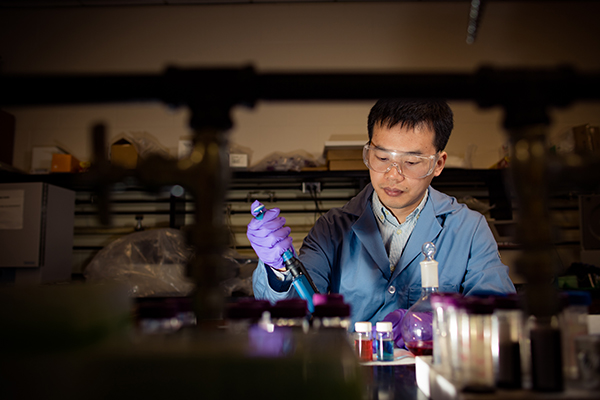
Full Text:
Identifying minute concentrations is the greatest challenge of test strips that have been developed to detect everything from cancer to infectious diseases to heart problems. The actual stripe on the paper simply isn't sensitive enough to change color for a human eye to easily see it at concentrations that make a life-changing difference.
Some nanoparticle bling could change that, and it would not greatly impact the cost of current test strips, according to new research. In this study, scientists took advantage of gold nanoparticles, widely used for in vitro diagnostics for decades, while adding a dual function to the nanoparticle by decorating each tiny sphere in a thin skin of platinum. Doing so makes it easier for the naked eye to observe changes on the test strip. It also increases the accuracy and provides quantifiable results for extremely low concentrations of key biomarkers, which are measured in picograms per milliliter.Image credit: Xiaohu Xia/Michigan Tech